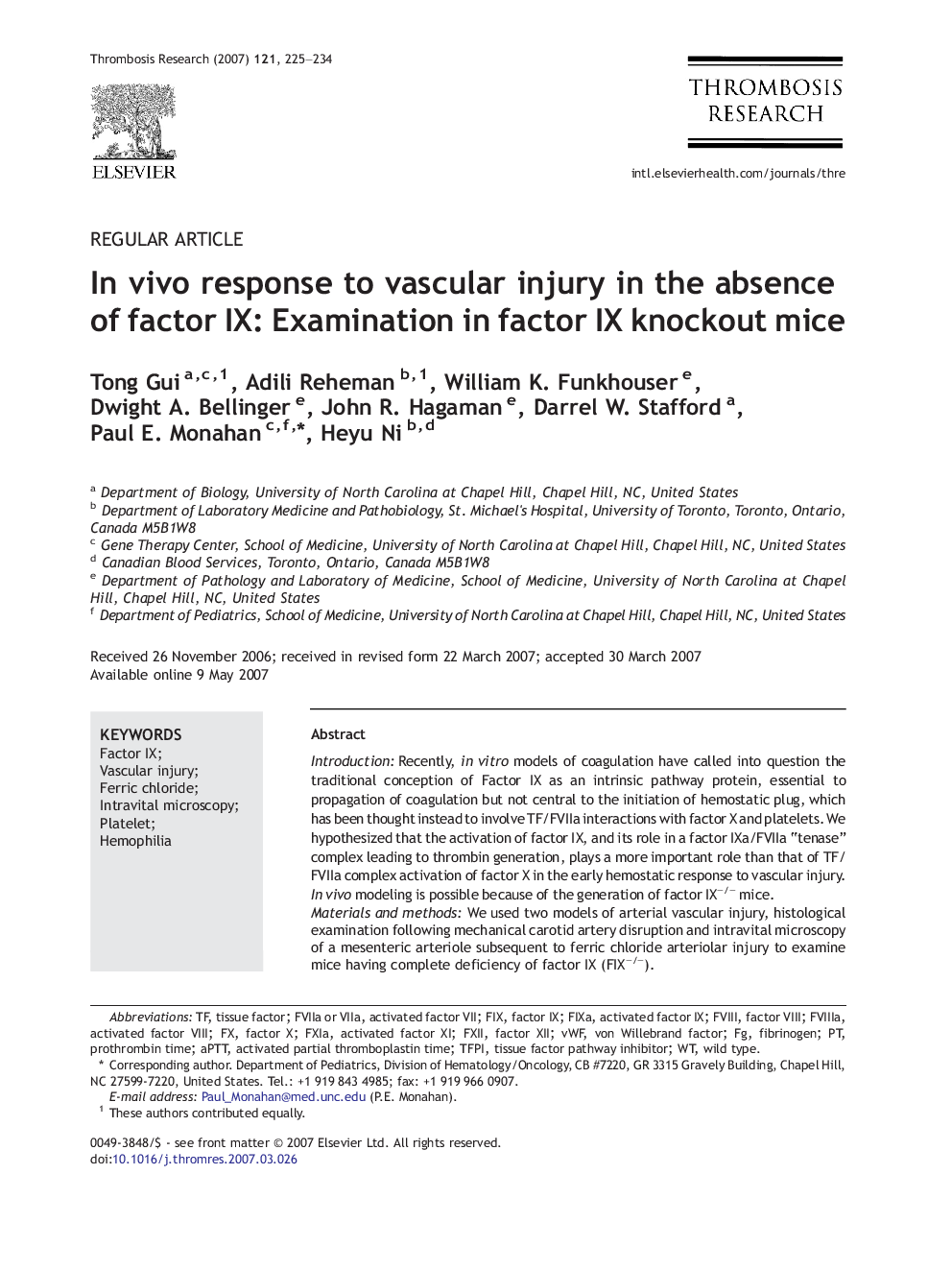| Article ID | Journal | Published Year | Pages | File Type |
|---|---|---|---|---|
| 3029900 | Thrombosis Research | 2007 | 10 Pages |
IntroductionRecently, in vitro models of coagulation have called into question the traditional conception of Factor IX as an intrinsic pathway protein, essential to propagation of coagulation but not central to the initiation of hemostatic plug, which has been thought instead to involve TF/FVIIa interactions with factor X and platelets. We hypothesized that the activation of factor IX, and its role in a factor IXa/FVIIa “tenase” complex leading to thrombin generation, plays a more important role than that of TF/FVIIa complex activation of factor X in the early hemostatic response to vascular injury. In vivo modeling is possible because of the generation of factor IX−/− mice.Materials and methodsWe used two models of arterial vascular injury, histological examination following mechanical carotid artery disruption and intravital microscopy of a mesenteric arteriole subsequent to ferric chloride arteriolar injury to examine mice having complete deficiency of factor IX (FIX−/−).ResultsBoth injury models demonstrate that platelet rich thrombi /hemostatic plug in FIX−/− mice is dramatically reduced as compared to wild type mice under conditions of high shear; in fact, no platelet thrombi (> 20 μm) were observed in the intravital experiments. Interestingly, the platelet defect is more striking than that described in mice lacking fibrinogen and/or von Willebrand factor.ConclusionsThe results suggest TF/FVIIa → FX pathway is insufficient for effective platelet aggregation in the presence of high flow, requiring factor IX at the convergence of both intrinsic and extrinsic pathways. Following platelet adhesion, factor IX is required for normal platelet aggregation in vivo, as well as thrombin generation and propagation of occlusive thrombus at the site of vascular injury.
